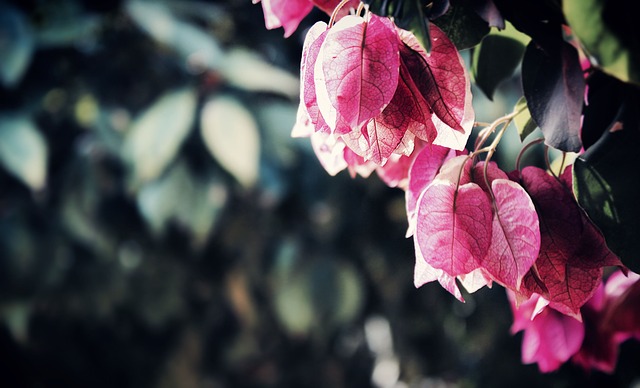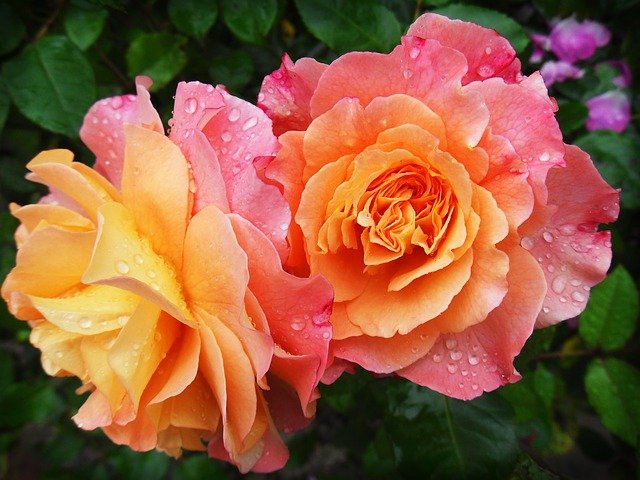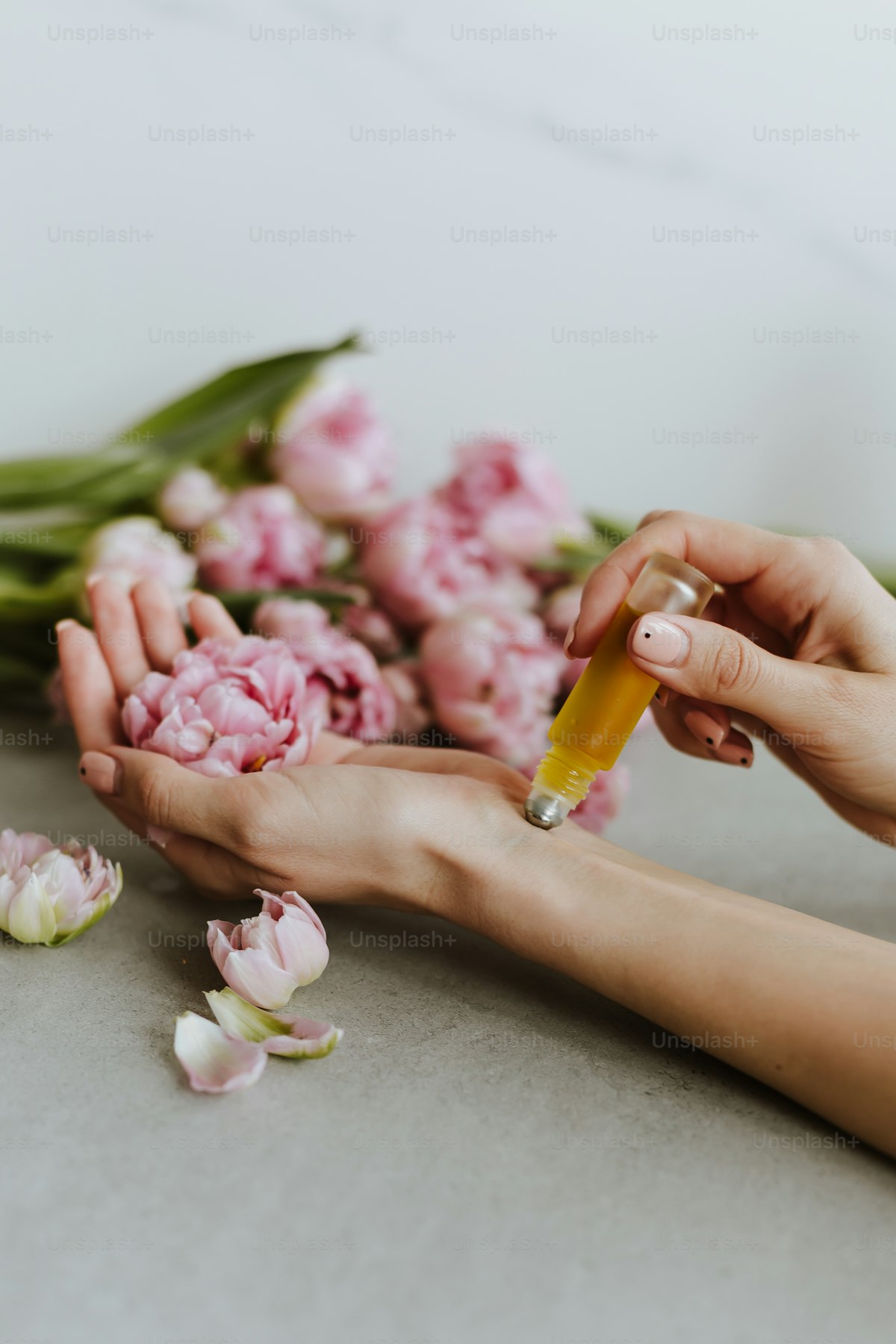
Gardens are much more than simply a venue for decorating. It is more than just an activity for the green-thumbed hobbyist. A garden provides the person who has put time into it a way of finding tranquility, peace, and a feeling of appreciation of life. Especially if you are good at it, its effects are profound.
A handy trick is to turn the handle on a tool that you use often into a makeshift ruler. Tools that have long handles such as rakes, hoes and shovels can be used in place of a measuring stick. Lay the handles onto the floor and place a measuring tape beside them. With a permanent marker, note pertinent measurements on the tool handle. When you decide to work in the garden again, you will now have a ruler at your disposal.
Make sure to lay the sod properly. Prior to laying the sod, prepare your soil. Pull all the weeds and loosen the soil so the new roots can take easily. Make sure your soil is flat and compacted. Make sure the soil is moist all the way through. Staggered rows with offset joints is the best way for the sod to be laid out. Press the sod down firmly so that the surface is flat and even. If there are gaps remaining, fill them with a bit of soil. Sod must be watered every day for about two weeks, and then it will have rooted and be completely ready to be walked on.
In order for plants to grow, they must have enough CO2. Most plants grow better in higher levels of CO2. A greenhouse is the best way to create an environment rich in CO2. Higher CO2 levels can provide optimal conditions for growing plants.
When powdery mildew appears on your plants, you should not rush out to purchase a costly chemical treatment. The best solution is mixing baking soda, a drop of liquid dish detergent and water together in a spray bottle. Spray this on your plants once a week until the mildew disappears. The baking soda is harmless to your plants and a very effective remedy.
It is a good idea to pre-soak your seeds in a dark environment overnight. Take 3-4 seeds, put them in a small jar or container, and cover them with water. This will hydrate the seeds and facilitate growth. This gives the seeds a better chance of flourishing.
Keep your plants dry and aerated daily. Moisture on your plants is a sure way to attract parasites and disease. Fungus is a common problem when plants are allowed to remain damp. You can rid your garden of fungi with fungicidal sprays. However, it is best to treat your garden before there are problems.
Do not cut your grass too short. Keeping grass with a little more height makes it healthier. This allows the roots to grow more deeply and makes the blades of grass more resistant to becoming dry and discolored. Short grass is more prone to getting dried out and turning brown.
Read instructions on new gardening chemicals and tools before you use them. If you miss this easy step, you run the risk of harming yourself due to the chemicals that can irritate your skin. Ensure that your body is protected by always following instructions.
Allow enough room between plants for air to circulate, so that plants do not stay too wet. Moisture not only attracts parasites, but also makes it easier for your plants to contract diseases. Fungus is a common problem when plants are allowed to remain damp. Be sure to prevent the growth of fungus with a spray that will inhibit their growth.
Learn the best harvest time for each vegetable. Every vegetable has a proper time to be picked in order to capture the perfect flavor. For instance, peas and zucchinis are tastiest when picked young. By contrast, it’s best to wait until tomatoes are fully ripe before picking them. You should know the proper time to pick vegetables.
Be sure to split the irises. Increase your iris population when you divide up overgrown clumps. If you find any dead irises in your garden, immediately pull up the bulbs. These bulbs will divide into several parts naturally when you pick them up. You can then replant them, and watch them flower the following year. You can divide rhizomes with a knife. Get rid of the center and keep the new pieces you cut from the outside. Divide your pieces carefully; they should each have one good quality offshoot apiece. Replant immediately.
Pectrum Pesticides
Think about using evergreens in your yard that produce berries during the year. Your yard will then have bright spots of color all year round, which is especially cheerful in the winter when all of your other flora is bare or colorless. Some evergreens that will add life to your yard in the wintertime are the American Cranberrybush, Common Snowberry, Winterberry, and American holly.
Keep your garden free from broad-spectrum pesticides. Broad-spectrum pesticides not only kill pests, but also “good” bugs like ground beetles that eat pests. Beneficial insects are more susceptible to strong pesticides than the insects you are actually trying to get rid of. This will lead you to end up killing off the good bugs in your garden, leaving the field wide open for the harmful ones. This may then lead to using even more pesticides to eliminate this new problem.
When landscaping and gardening in autumn, choose plants and trees with vibrant colors. That doesn’t have to be the case. The foliage of autumn makes for perhaps the most colorful season of the year. Fall hues of orange, yellow and red can be seen falling from maple trees, and dogwoods and beech trees offer comparable spectacles. Some very good shrubs to choose are barberry, hydrangea, and cotoneaster, which is a member of the rose family.
Choose one plant and make it the focal point of your garden. A good garden design will have a focal point which captivates attention. In most cases, an original plant makes a good focal point.
Choose one plant to be the focal point. Any great garden design involves using a focal point to grab someone’s attention and keep it there. Usually this focal point is a luscious plant that is distinctly different from the plants and scrubs that surround it.
Using a solution of aspirin and water can prevent certain plant diseases. Dissolve one aspirin and a half for 2 gallons of water. You can easily spray the plans with this concoction to help them fight of disease. Apply at three week intervals.
Water your garden wisely. Consider a soaker hose as a way to water multiple plants while saving time. Make sure that your water pressure is set to low, so that no harm will come to any tender plants. Let your soaker hose run for a few hours while you do other things.
If you want a sustainable garden, leave part of it undisturbed as a home for the wildlife in the area. A natural area will allow beneficial birds and insects, many of which pollinate plants, to live on your property and help your garden grow stronger.
Vegetables are softer in the heat of the hottest part of the day; even gently picking them at that time can damage them. When you remove the produce from the plant, use shears or a knife to cut them from the vine without twisting, as this can damage the plant.
It is easy to quickly prepare your perennial garden ground. Take your spade and work up a thin layer of soil. Turn that soil over, then spread a few inches of wood chips on the newly turned area. After a few weeks, dig, then plant your perennials.
Try to put an aspirin in the water to get rid of plant diseases. Your plants can benefit from a solution you can make by dissolving one and one-half aspirins into a couple of gallons of water. Next, coat the plant with the aspirin mixture by spraying it on the leaves. Your plants should be sprayed one time each three weeks.
Top all your garden beds with several inches of organic mulch. Mulch discourages weeds and helps retain moisture while adding nutrients to your flower bed. This will also give a nice, professional appearance to your garden all year.
If you are growing plants inside of your home, you need to keep the thermostat set to 65 to 75 degrees during the day. It is important for them to be kept in this temperature range if they are to grow properly. Heat lamps can be used to promote growth without the necessity of raising your home’s interior temperature.
When you are planning on growing a garden, you should think about the space you will need to provide a healthy growing area for your plants. Amateur gardeners often make the mistake of failing to leave enough space for fully matured plants. Proper spacing is important not just to accommodate the plants’ sizes but also for air circulation. Plan accordingly and put an appropriate amount of distance between seeds.
When you are growing organic plants within the home or an enclosed area, considering how much light the plants will receive must be emphasized. If you live in a home or apartment that does not get great sunlight you may want to consider growing plants that are designed to grow in low or medium-light environments. You can also try using artificial lighting to help.
Try to avoid letting your organic garden chores build up. No matter what your schedule is like, you should be able to fit in small things that will help you avoid having an overwhelming amount of work all at once. If you are outside with your dog, pluck a few weeds while your dog is taking care of his business.
Want to get rid of weeds naturally? Use a lot of layers of newspaper in order to achieve weed control. Weeds require sunlight for growing. They will suffocate and die if you cover them with newpapers. Newspaper decompose quickly and integrate into the compost. If you want it to look better, just add a layer or two of much over top of the newspapers.
Be aware of the location you are in, and the seasonal and climate changes that occur. Make sure that you adjust your watering cycles to match these changes. The watering depth and temperature depends mainly on the time you water them and the soil they are planted in. An example would be that if you live in a humid and warm climate, then you’ll want to avoid watering the plant’s leaves as this will cause fungus to grow on your plants. Instead, aim to water the root system only.
Use a beer trap to get rid of unwanted pests, like slugs. Take a glass jar and bury it so that the soil is even with its mouth. Fill the jar with beer within one inch of the top. Slugs will crawl into the jar to get the beer and not be able to get out again.
Use these tips to bring life back to your garden. It is a decision you will not regret, especially when you see all your plants alive and blooming. Gardening can have a powerful effect on your life, so give it a try.
While gardening organically requires more work than gardening with the help of chemicals, the rewards are worth it. While chemical-based gardening products make bold claims, it is hard to dispute that organic gardening consistently produces superior results.
Blue widgets is a complex topic, which is why you should take the time to research it some more. This article definitely has the wisdom that you seek. Now is the time to take the knowledge you have gained and apply it to your life!













